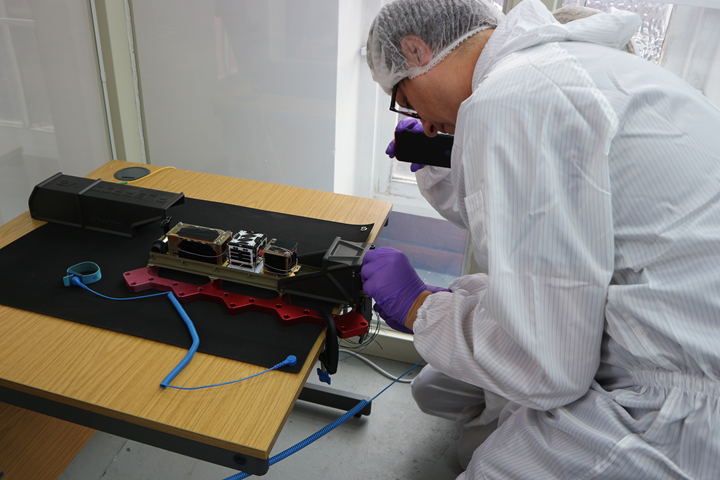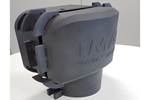Successful integration of PocketQube satellites in 3D-printed composite deployer
The 3D-printed, composites-based AlbaPod v2 satellite deployer and nine integrated PocketQubes for the Alba Cluster 3 mission enable largest PocketQube launch to date.

Photo Credit: CRP Technology
(Glasgow, U.K.) recently announced the successful integration of nine PocketQube satellites — miniaturized satellites designed to de-orbit and decay upon re-entry into the earth’s atmosphere — with the AlbaPod v2 satellite launcher, which is said to be the world’s only space-proven PocketQube deployer, and is entirely 3D printed by CRP Technology (Modena, Italy) using its Windform XT 2.0 carbon fiber composite material (see “Satellite deployer redesign supported by 3D-printed composites”).
According to Alba Orbital, the PocketQubes will be applied to the upcoming Alba Cluster 3 mission, termed “That time of year,” which will take customer satellites to orbit on a SpaceX Falcon 9 launch vehicle in December 2020 as part of a rideshare agreement. The mission is said to be the largest PocketQube launch to date.
The mission’s cluster will include Turkey’s first pico-satellite, Grizu-263a, which was designed by a team of engineering students from Zonguldak Bülent Ecevit University (Zonguldak) and named in honor of the 1992 Kozlu coal mine disaster. The team’s satellite, according to Alba Orbital, will be joined with other prestigious universities on the Alba Cluster 3 lineup, including Netherlands-based Delft University of Technology (TU Delft) and Ariel University (Ariel, Israel).
“Alba Orbital is the only company right now who have a qualified PocketQube Deployer and this gives you a certain confidence that your satellite will be deployed without any problems,” says Delfi-PQ team member, M. Åž. (Mehmet) UludaÄŸ, in response as to why TU Delft signed up to launch.
Related Content
-
Plant tour: Teijin Carbon America Inc., Greenwood, S.C., U.S.
In 2018, Teijin broke ground on a facility that is reportedly the largest capacity carbon fiber line currently in existence. The line has been fully functional for nearly two years and has plenty of room for expansion.
-
JEC World 2024 highlights: Thermoplastic composites, CMC and novel processes
CW senior technical editor Ginger Gardiner discusses some of the developments and demonstrators shown at the industry’s largest composites exhibition and conference.
-
Infinite Composites: Type V tanks for space, hydrogen, automotive and more
After a decade of proving its linerless, weight-saving composite tanks with NASA and more than 30 aerospace companies, this CryoSphere pioneer is scaling for growth in commercial space and sustainable transportation on Earth.



